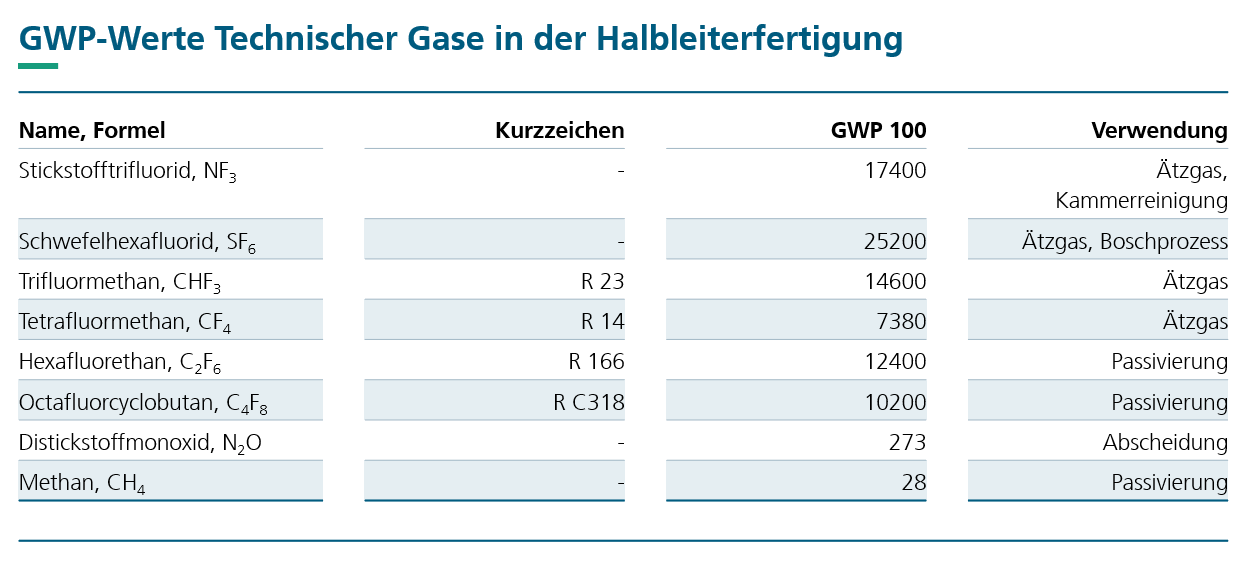The use of climate-relevant gases and substances at several institutes of the Fraunhofer-Gesellschaft was recorded as part of the preparation of the Fraunhofer GHG balance sheet for the balance sheet year 2021. Particularly noteworthy here are refrigerants and special gases containing fluorine, which are mainly used in semiconductor production.
The combination of the quantities used and the high GWP (Global Warming Potential) values of these substances provides a valuable basis for analyzing their contribution to the overall GHG balance in more detail and identifying optimization potential in a targeted manner.
Information on the quantities of refrigerants procured directly by the institutes and used to fill systems is already available. The contribution of external service providers is also taken into account for further detail.
The collection of specific data on the use of technical gases containing fluorine (e.g. NF3, SF6, CF4) is currently being supplemented by targeted queries to the participating institutes. This enables a continuous expansion of the data basis and creates the basis for precise and comprehensive balancing.
 Fraunhofer Institute for Photonic Microsystems
Fraunhofer Institute for Photonic Microsystems



